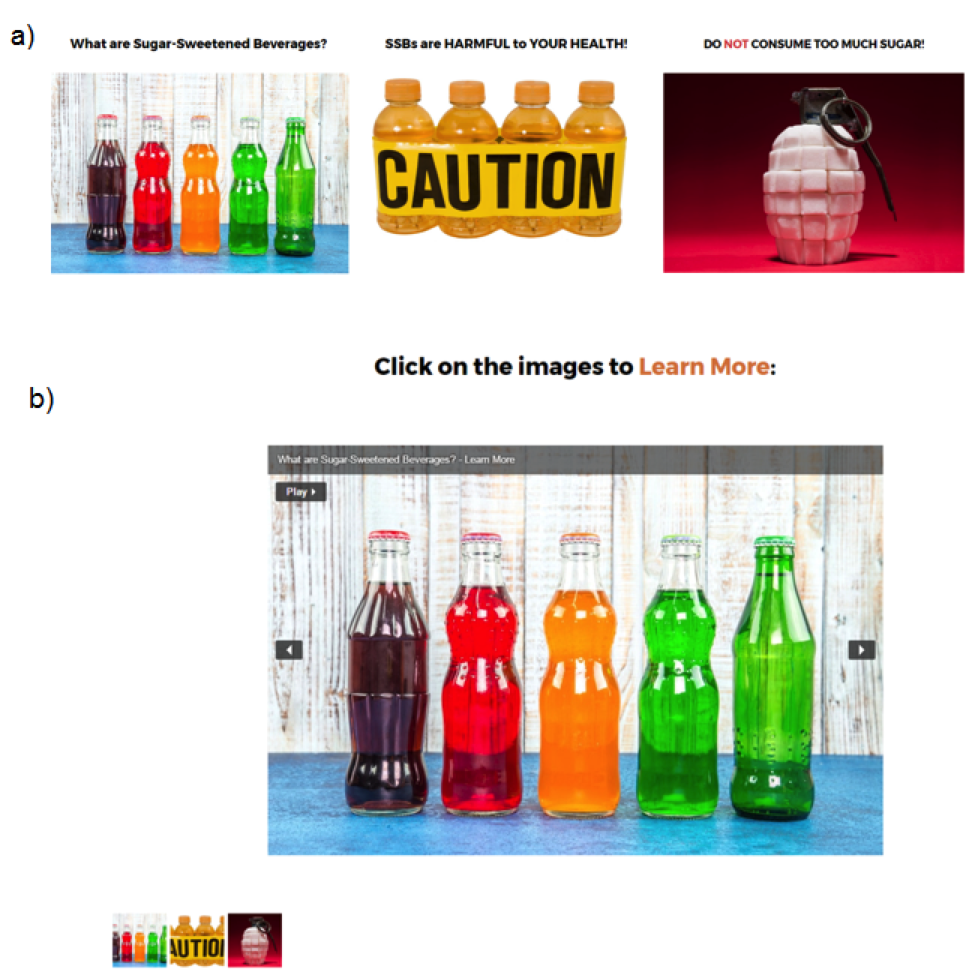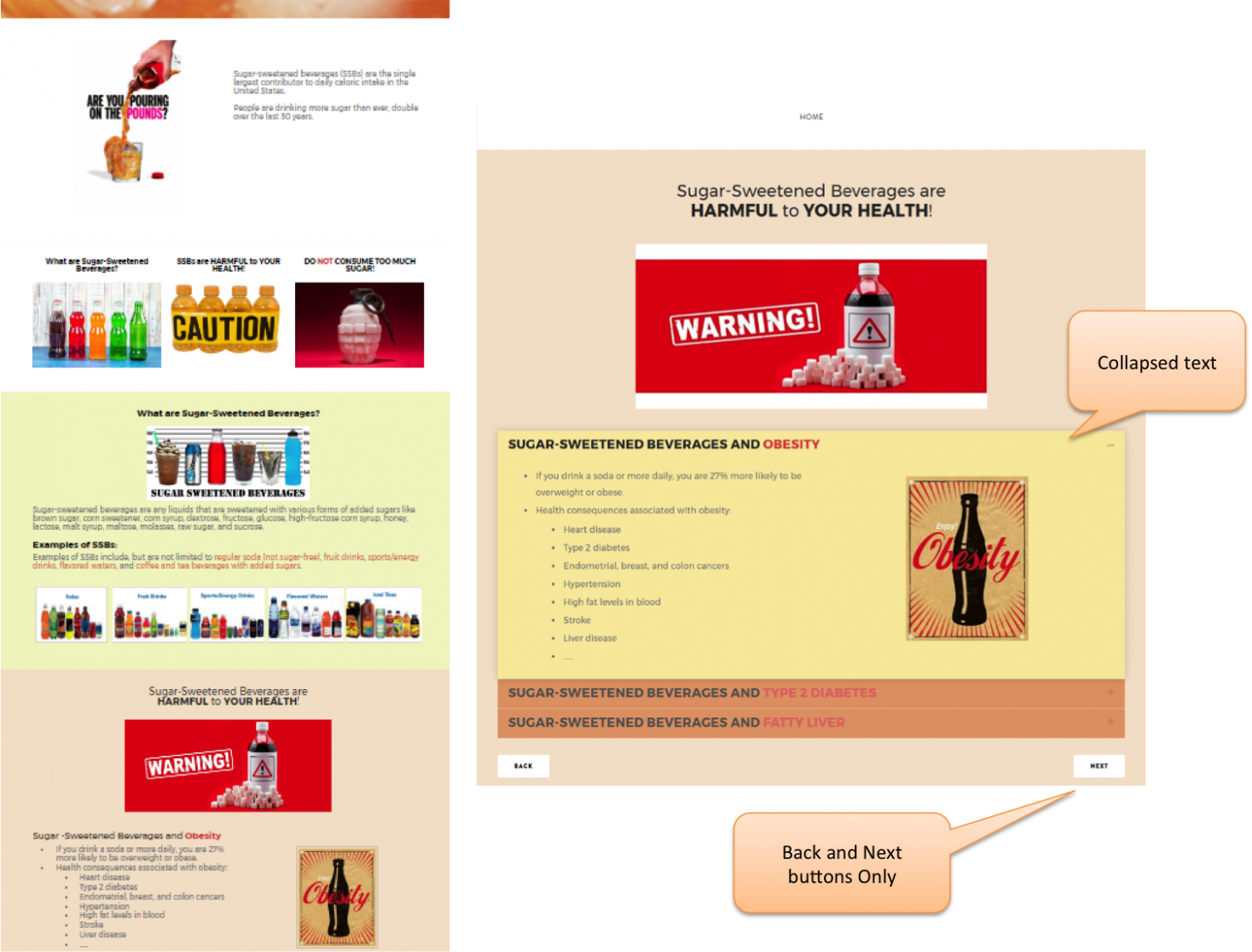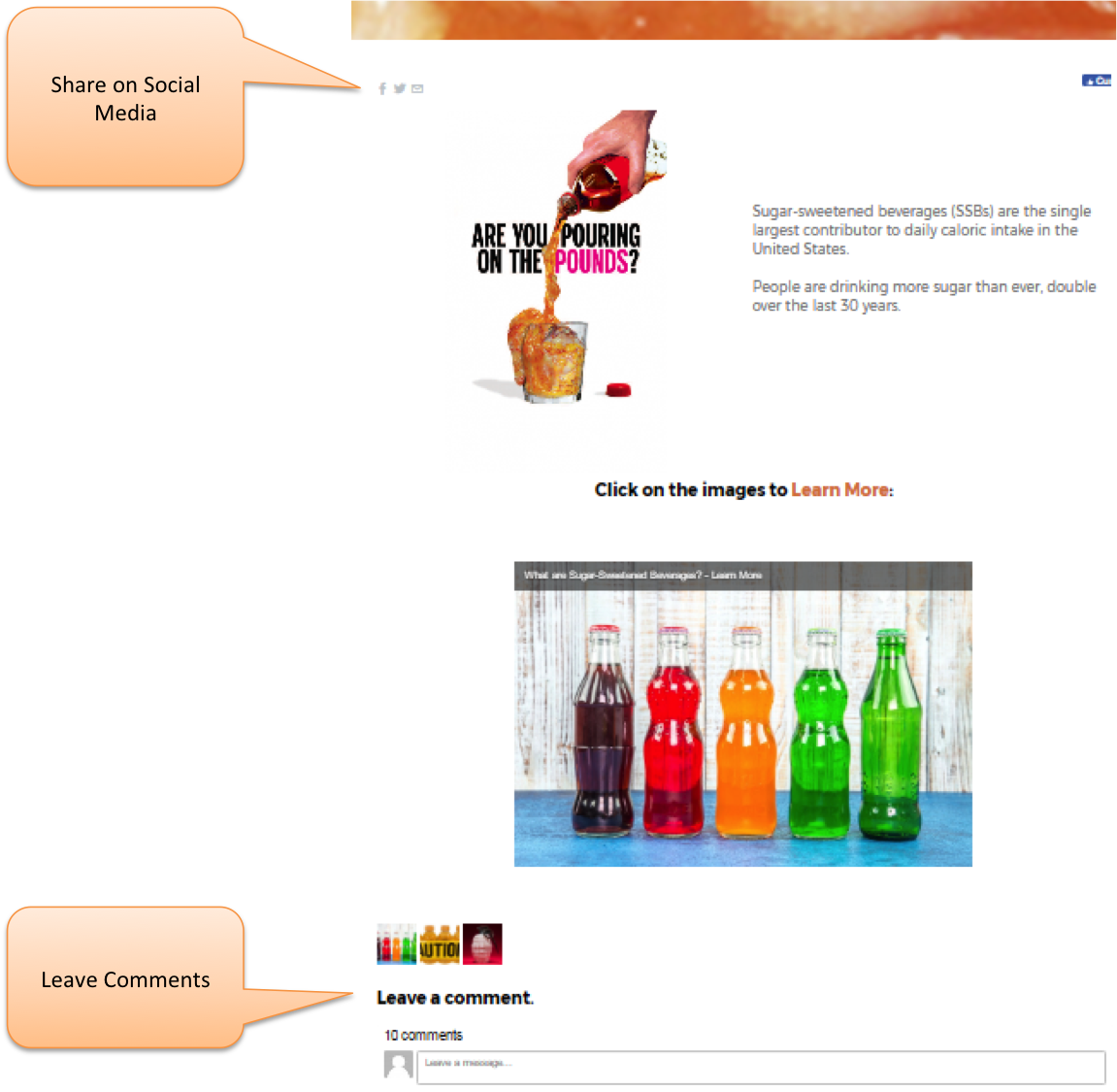Media Effects Research Lab - Research Archive
The Effects of Interactivity-induced Control and Absorption on Persuasion
Student Researcher(s)
Lulu Peng (Ph.D Candidate);
Jomara Binda (Ph.D Candidate);
Faculty Supervisor
This project was done based on COMM 517 course.
INTRODUCTION
Recent studies (e.g., Kang & Sundar, 2016; Oh & Sundar, 2015) revealed that simply changing media features can have an impact on persuasive outcomes of health-related content; however, the question remains as to whether and how interactivity can enhance the persuasiveness of specific message types, such as fear appeals.
We proposed that certain interactivity affordances may function to increase persuasion by enhancing fear arousal and suppressing psychological reactance. The interactivity effects model (Sundar, 2007) argues that the proximal outcomes (e.g., perceived contingency) of interactivity can contribute to user engagement. Users that are more involved in the content are potentially more subject to the influence of emotional appeals (Slater & Rouner, 2002), meaning that they may experience a higher level of fear arousal. In addition, some types of interactivity affordances indicate more action possibilities and system responsiveness (Oh & Sundar, 2015; Sundar, Bellur, Oh, Jia, & Kim, 2016), which likely renders a sense of control. Perceived control elicited by website interactivity may counteract perceived threat to freedom provoked by fear appeals and the suppression of perceived threat to freedom can lead to more promising persuasive outcomes.
RESEARCH QUESTION / HYPOTHESES
H1: Modality interactivity → Interface assessment → Absorption → Fear → Persuasion
H2: Message interactivity → Perceived contingency → Absorption → Fear → Persuasion
H3: Source interactivity → Agency enhancement → Absorption → Fear → Persuasion
H4: Message interactivity → Perceived contingency →Perceived control → Perceived threat to freedom (Reactance) →Persuasion
H5: Source interactivity→ Agency enhancement →Perceived control → Perceived threat to freedom (Reactance) → Persuasion
METHOD
A 2 (modality interactivity: presence vs. absence) × 2 (message interactivity: presence vs. absence) × 2 (source interactivity: presence vs. absence) fully factorial, between-subjects experiment was utilized to test the hypotheses. Participants (N = 272) were randomly assigned to one of the conditions (i.e., to browse one of the websites with fear-based persuasive content) and asked to answer questions regarding their perceptions of the website as well as their intention of compliance.

Figure 1. Modality interactivity: the absence condition (a) and the presence condition (b).

Figure 2. Message interactivity: the absence condition (left) and the presence condition (right).

Figure 3. Source interactivity: the presence condition (Share on Social Media (top) and Leave Comments (bottom)).
RESULTS
H2-H5 were supported; H1 was not supported. We did not find a significant effect of modality interactivity (manipulated as a gallery) on interface assessment. Message interactivity (layered content and breadcumbs) promoted perceived contingency, which led to more cognitive absorption in the site, resulting in more fear arousal, hence more persuasion. Perceived contingency also suppressed perceived threat to freedom (a proxy for psychological reactance) prompted by the content through perceived control of the interface, resulting in more intention of compliance. Furthermore, source interactivity (sharing and commenting functions) promoted perceived agency, which led to more user engagement (i.e., cognitive absorption), resulting in more fear arousal, hence more intention to follow the advocated behavior. The enhanced agency also led to more perceived control of the interface, which suppressed perceived threat to freedom prompted by the content, resulting in more intention of compliance.
CONCLUSIONS/DISCUSSION
Perceived control and cognitive absorption were identified as the key mediators that bridged the effects of medium and content: perceived control generated by interactivity affordances could reduce perceived threat to freedom evoked by the persuasive content; engagement with the site could increase fear arousal as a way to influence persuasion.
This study suggests the potential to mitigate unintended message effects with medium-related strategies by revealing a relation between perceived control and threat to freedom. Campaign designers who use websites as information dissemination channels and aim to suppress reactance are advised to seek ways to enhance perceived control such that the counterproductive perceptions or behaviors associated with reactance are reduced. In addition, given that the level of fear arousal might differ depending on to what extent an individual was absorbed in the site, health campaign designers that focus on fear appeals and seek to use a web-based channel may look into ways to promote absorption as a means to instigate more fear arousal.
For more details regarding the study contact
Dr. S. Shyam Sundar by e-mail at sss12@psu.edu or by telephone at (814) 865-2173

